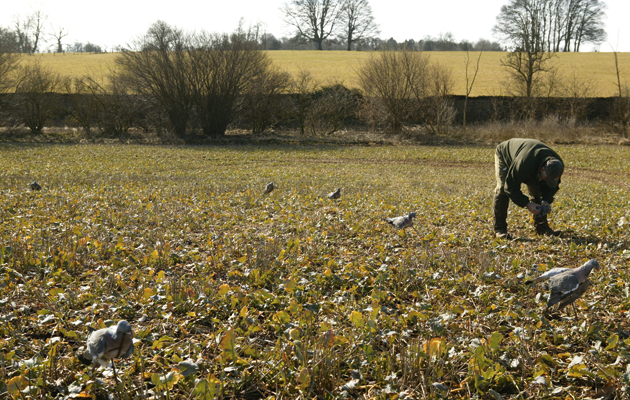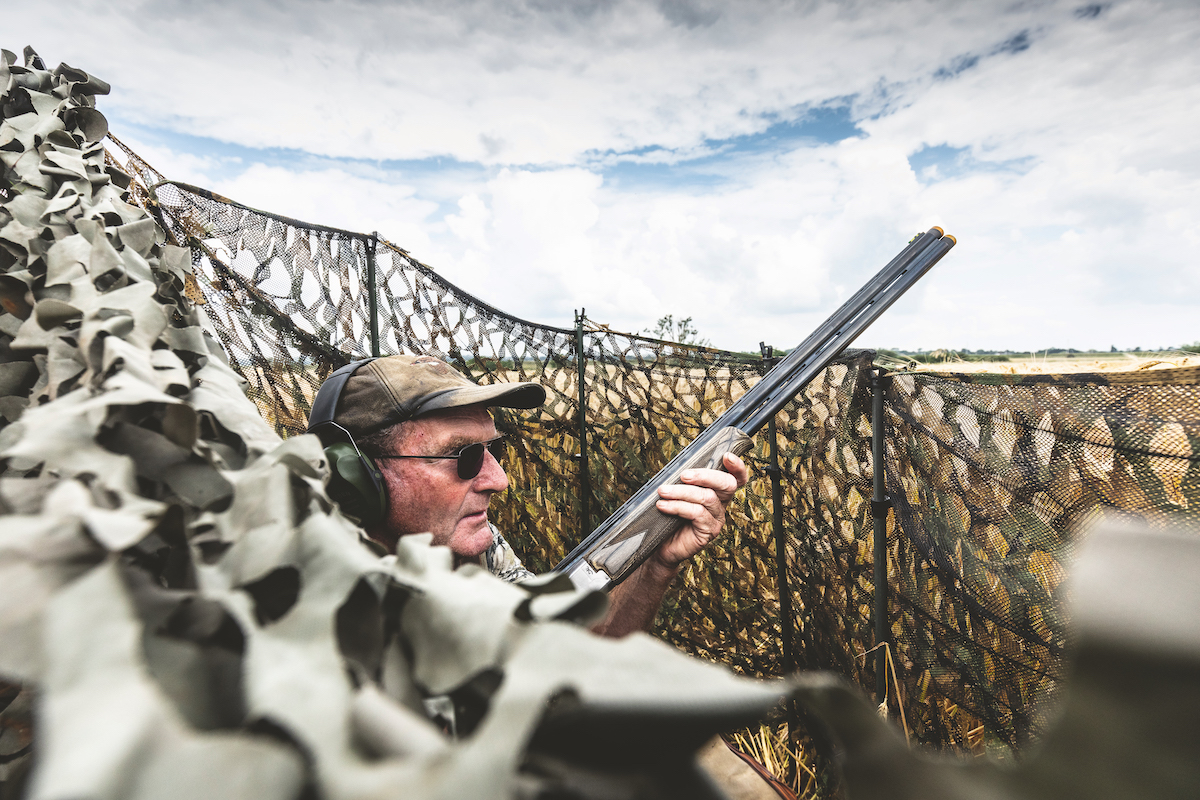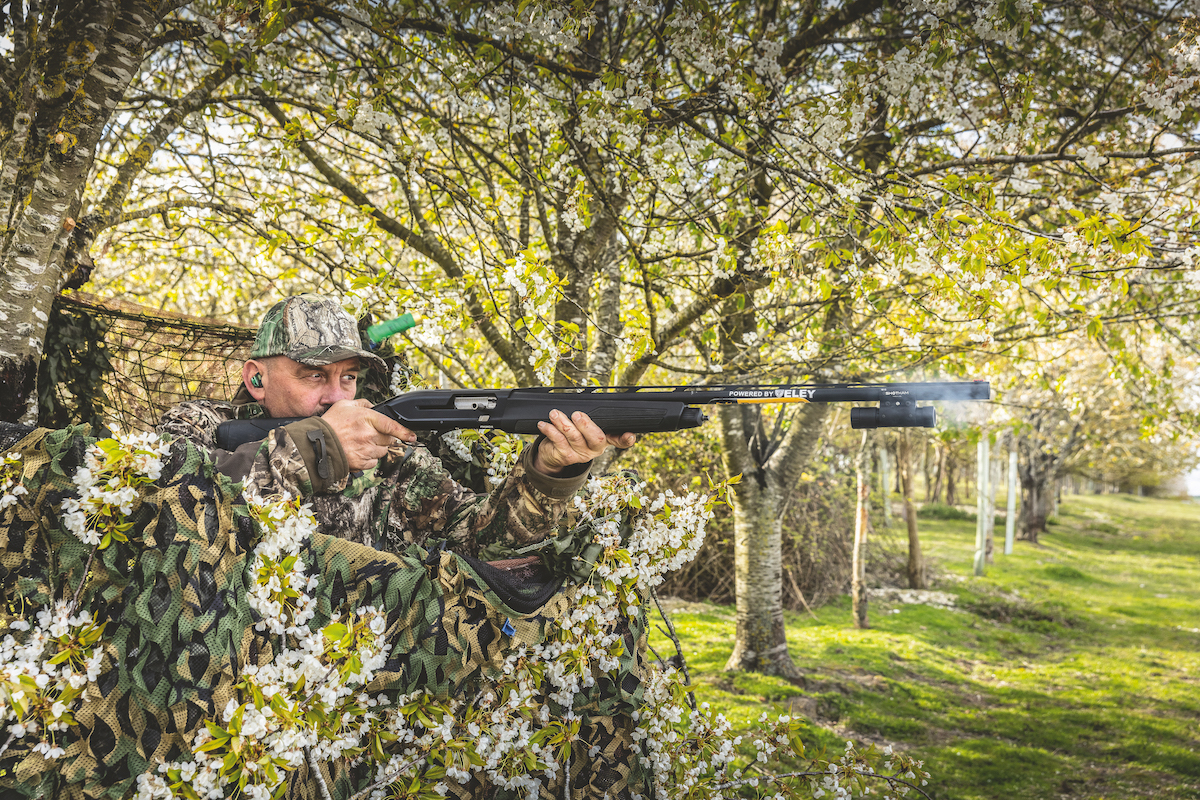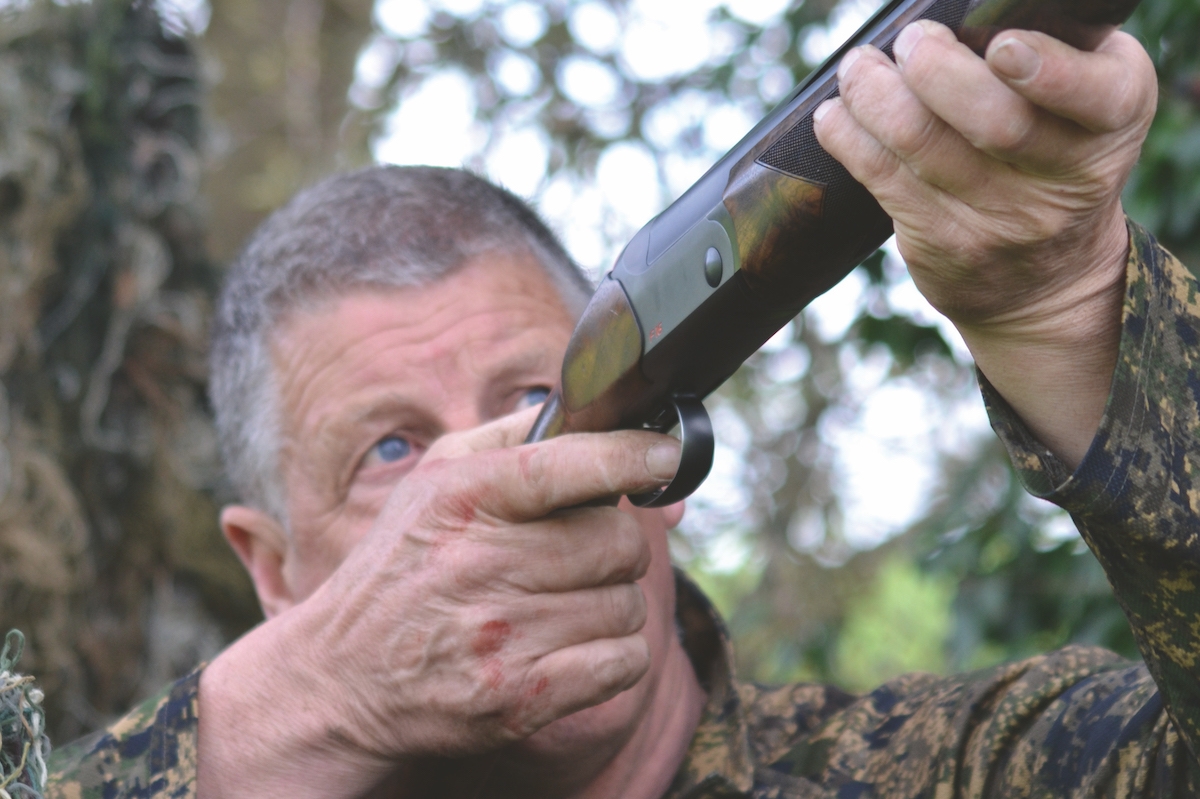Do you shoot pigeon for sport or pest control?
When it comes to shooting pigeon Peter Theobald asks if the legal framework is capable of accommodating the twin aspects of sporting pleasure and pest control.
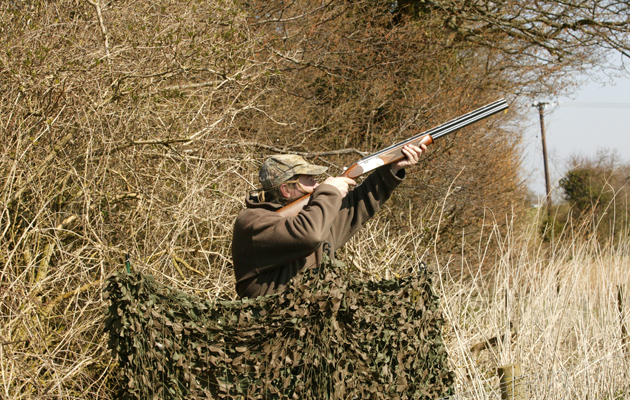
Here’s a question for you, do you shoot pigeon for sport or are you doing it as pest control? Under the terms of the general licences, we are only allowed to kill pigeon all year round to prevent unacceptable damage to farmers’ crops, even if that occurs during the birds’ breeding season – in other words, pest control.
At no point in the document does it say that this control must be carried out in a sporting manner, and this leaves us shooters with a bit of a dilemma. When asked why we are killing pigeon in the summer, it seems absurd to me that we must answer that we are doing it solely to protect crops. Most decoyers I know agree that valuable crop protection is the result of their activities, but the sporting attributes of woodies is what makes us do it.
The woodpigeon is a victim of its own success; most pundits agree that its population is increasing steadily, despite the fact that we kill large numbers every year. It is obvious that imposing a close season – as many people have suggested – would exacerbate the problem enormously. But this is where opinion among shooters, sharply divides.
On the one hand, we have people who possess no desire to shoot large numbers of birds, preferring to knock one or two down for the pot, and have no real concern for farmer’s balance sheets. Then, we have the thousands of dedicated decoyers who spend a lot of time looking for the opportunity to shoot big numbers.
I can see no reason why both types of enthusiast cannot be accommodated, but as the law stands, the former would be acting illegally if he admitted he only wanted to shoot a pigeon to eat. While no pigeon shooter has yet been prosecuted for saying he shoots woodies for sport, it is the advice of BASC to always say, if questioned, that you are doing it for reasons of pest control.
Sympathy for the pigeon
So where does the farmer stand in all of this? After all, we would have no shooting at all were it not for farmers allowing us on to their land, mostly free of charge, to protect their crops. In general, they expect us to turn up when the birds are there, doing the damage, and they are not particularly concerned whether or not we enjoy some spectacular sport, so long as we shoot as many pigeon as possible. I can only remember one farmer who had any sympathy for pigeon and often refused me permission to shoot them if they were doing no damage.
On one memorable occasion he had upwards of 2,000 birds feeding on pea stubble, and with visions of at least a 300-bird day, I phoned him to ask whether it would be OK to have a go. “I’d rather you left them alone,” he said, “I want them to eat all the loose peas so I won’t have to spray off any volunteers in the following wheat crop.” I tried to point out that once the peas were gone, the pigeon would shift straight on to his winter rape where it was unlikely I could kill a fraction of the number that I could on the stubble, but he was adamant, and I had to turn my back on a red-letter day.
Responsibility for habitats
For most farmers, the pest control aspect of pigeon shooting comes a long way before any sporting pleasure we may derive from it, but for us decoyers the opposite is true. If a law forbidding us to shoot pigeon on the wing were introduced, would you still be as keen to go and protect someone’s crop?
Whether or not we like it, humans are at the top of the food chain, and we are all responsible in some way for influencing the habitats and lives of the creatures with which we share the planet. It may be a new motorway scything over virgin countryside or a huge out-of-town supermarket, all will have an effect upon local wildlife. All shooters and farmers are managing the country’s flora and fauna, and that is a state of affairs I would like to see continue. As soon as bureaucrats start to make decisions that affect the running of the countryside, whether it be in issuing general licences or EU directives, we run the risk of losing the power to decide for ourselves what is best for the sport that we love.
Effective population control
I would be the last person to see the demise of the woodpigeon, having spent my entire adult life enjoying the challenging sport the bird provides, and I would hate to see it relegated to the ranks of true vermin such as rats, a species that most people happily poison all year round. There is no doubt that pigeon numbers have to be controlled at all times of year, and that shooting is the most effective way of achieving this. Let’s not be shy in admitting that we can do this and enjoy the sport.
On a lighter note, at the time of writing pigeon are starting to return to their old haunts, with some reasonable-sized flocks feeding on the rape. Worryingly, though, I have received several reports of sick or dead birds being picked up in the roosting woods. I have noticed this before in big acorn years, and assumed it was due to toxins present in acorns when pigeon ate them over a long period of time. However, pigeon expert. Will Garfit believes that the problem could be caused by a throat infection, picked up by eating the sharp-edged nuts of beech mast. There are no beech trees in this area of Essex, but recently I shot a pigeon that was clearly ill, and upon examining it, found its throat was completely clogged with a cheese-like substance. I’m sure a racing pigeon fancier out there could tell us what the problem could be.
Look out for next month’s column in which I will offer advice on getting the best out of spring drillings.

